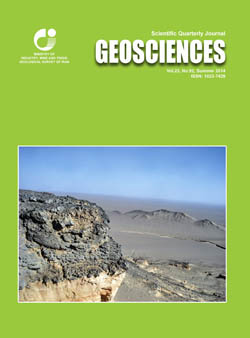Document Type : Original Research Paper
Authors
1 Ph.D.Student,Hormozgan University,Hormozgan;Research Institute of Petroleum Industry, Tehran, Iran
2 Associate Professor, Research Institute of Petroleum Industry,Tehran, Iran
Abstract
The Dalan Upper member (Permian) with carbonates and evaporite interlayer is one of the most important gas reservoirs in the folded Zagros area and Persian Gulf. In this investigation porosity types, their genesis and controlling factors have been studied at Surmeh surface section and a subsurface section in Persian Gulf. Based on the new genetic classification of Ahr (2008) for carbonate porosity, porosity is created or altered by hybrids of depositional processes, diagenetic processes and mechanical fracturing in the studied intervals. In subsurface samples, porosity is hybrid of depositional and diagenetic types. In grain-supported microfacies, like ooidgrainstone related to the shoal environment, interparticle porosity is created which is a type of depositional porosity. Moldic, vuggy and intercrystallineporosity, which are diagenetic types of porosity,were formed in the later stages of diagenesis. Therefore, porosity in this microfacies is facies-selective and facies map can be used as a proxy for porosity distribution map. In surface section, besides depositional and diagenetic porosity, fracturing and brecciation are also significant. Brecciationoccured as a result of dissolution of anhydrite of Nar Member and formed the solution collapse breccias. Active tectonic in the folded Zagros belt and folding are another possible sources of fracturing in the surface samples. The properm data of routine analysis shows that the reservoir characteristic of the studied interval is heterogeneous.So, it has been compartmentalized into six zones with different reservoir qualities from poor to very good.
Keywords

